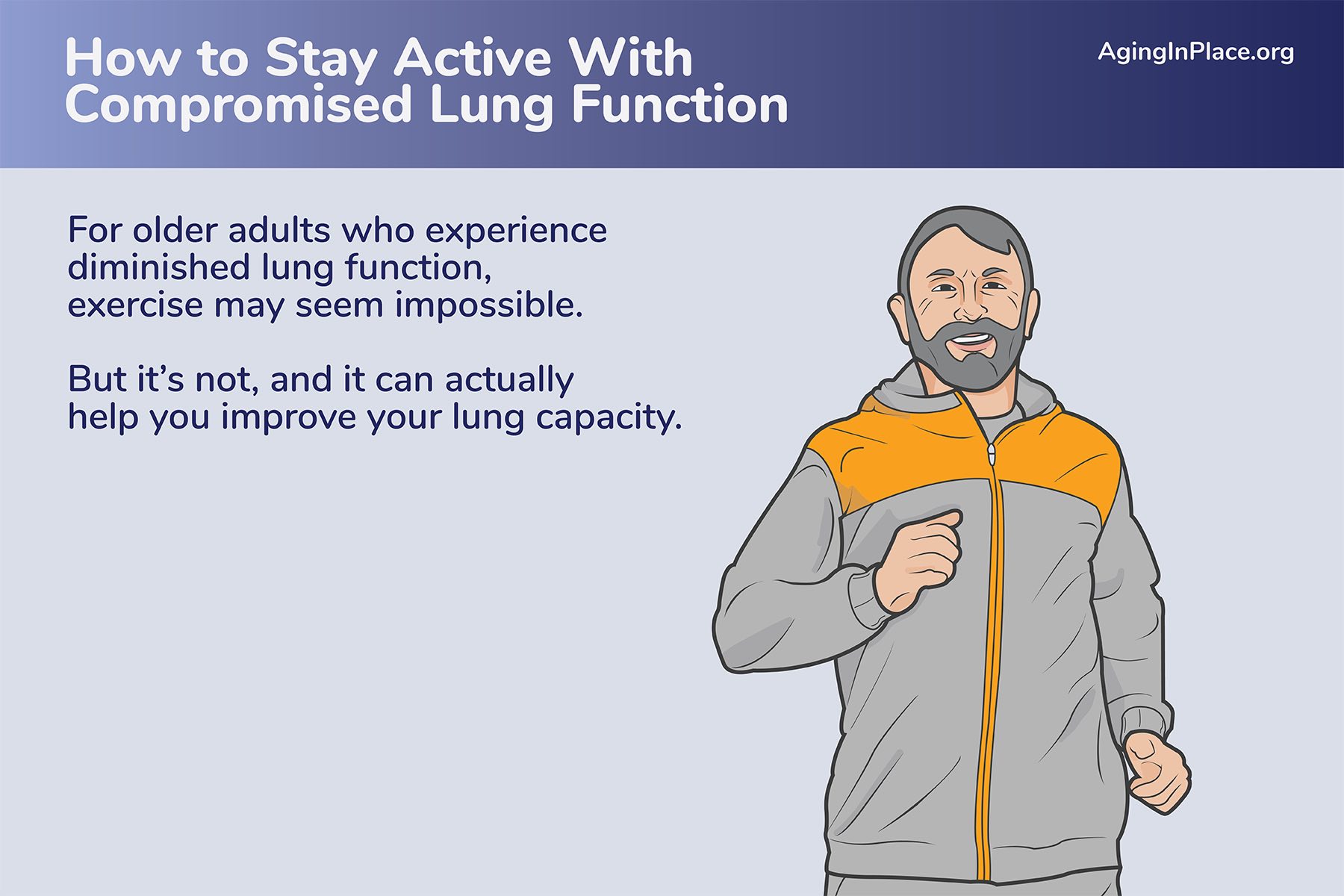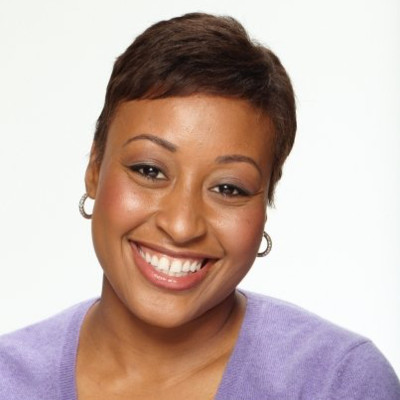“Although the lungs are not technically a muscle, they need to be ‘exercised’ for optimal performance just like any other organ in our system,” said Dr. Jeremie Walker, a physician at Opt Health. “And since the respiratory system is intricately connected to the cardiovascular system when you exercise, you are strengthening both the lungs and heart at the same time.”
Want to show your lungs a little TLC? We asked experts to weigh in on the best workouts and for advice on how to stay active even when your lungs aren’t functioning at 100%. But first, it’s important to understand what happens in the lungs when you exercise.
What Happens to the Lungs During Exercise?
During exercise, the lungs expand and contract, increasing in their efficiency of air exchange to meet increasing metabolic demands during exercise. In fact, according to Dr. Olin, the lungs expand so much that they can increase the amount of air we breathe by over 20 times—and up the blood flow to our lungs by five to eight times—to keep up with the demands of the body. Dr. Olin went on to explain that experts believe exercise is helpful for the lungs because it increases airflow and helps clear out secretions.

What Causes Compromised Lung Function?
Your lungs can become compromised when there is any sort of deterioration in respiratory function. This is a big issue considering the fact that anything that affects the respiratory system could eventually lead to respiratory failure—a serious condition that makes it difficult to breathe on your own and develops when the lungs can’t get enough oxygen into the blood. Pneumonia, opioid overdose, stroke, or even a spinal cord injury can all compromise your lungs.
There doesn’t need to be a big health issue present for the lungs to falter, though. Respiratory illness could also be a result of age. Starting at age 35, lung function typically begins to naturally decline, making breathing slightly more difficult. This age-related decline can stem from weakened diaphragm muscles, the loss of elasticity in lung tissue (which can make airways smaller), the shrinking of the rib cage bones (which leaves less room for your lungs to expand), and more.
Signs of Compromised Lung Function
There are several signs you can look for that indicate your lungs may not be up to par. One of the most obvious signals, of course, is shortness of breath. According to the American Lung Association, experiencing shortness of breath when you’re exerting a little energy, or shortness of breath that doesn’t subside after exercising, as well as labored or difficult breathing are all signs of diminished respiratory function.
And although being short of breath can be a clear sign that your lungs are compromised, Dr. Walker explained that there are many other health issues that can make you short of breath, even when the lungs are healthy. These health issues include anemia and cardiac disease, just to name two. “Asthma or reactive airways from smoking are also common causes for shortness of breath,” Dr. Walker added.
Other telltale signs of respiratory decline include chronic mucus production, wheezing, and chronic chest pain that gets worse when you breathe.
How do you know where your lungs stand? Dr. Walker explained that there is specialized testing that can be performed to measure lung capacities to better determine lung function and eliminate any cause for concern.
How to Stay Active With Compromised Lung Function
When your lungs are healthy, you have a pretty substantial breathing reserve. According to the National Institute of Health (NIH), this means “you may feel ‘out of breath’ after exercise, but you will not be ‘short of breath.’” With reduced lung function, you’re likely using a significant portion of that breathing reserve, which can make you feel out of breath. That means you need to be cautious.
Fundamentally, exercise for those with impaired lung function isn’t really different from those who don’t have issues. “It’s more so about how to program workouts for these individuals rather than specific exercises,” explained Susane Pata, a certified personal trainer and content strategist for the National Academy of Sports Medicine. She recommended getting clearance from your health care provider before starting any type of exercise regimen.
Certain exercises are better than others for people with diminished respiratory function. Pata suggested looking to exercises for the lower body, such as squats, lunges, and deadlifts, versus opting for upper-extremity exercises, like the overhead presses, chest press, and back row. The reason for this, according to Pata, is that the latter may cause shortness of breath and fatigue earlier in the set and hinder progress. There is research, though, that has found that some upper body training, when paired with breathing exercises, can be beneficial for those with chronic obstructive pulmonary disease.
Peripheral Heart Action Training, a form of circuit training that not only keeps an individual constantly moving from one exercise to the next, but alternates between upper and lower body exercises, can be a good way to progress training sessions for individuals with compromised lung function, Pata said.
“Exercise that challenges the muscles increases the demand for oxygen and therefore the breathing rate,” Pata explained. “The respiratory muscles are also conditioned through exercise with this increased breathing rate. This, in turn, increases the amount of oxygen uptake and can increase lung capacity.” Pata further added that with increased lung capacity, breathing becomes easier because of the increased oxygen with each breath. “Oxygen is delivered to the blood at a greater rate, thereby allowing for proper cell function for bodily processes,” she said.
Strengthening the Lungs With Cardio
While strength training can be effective, other exercises are also helpful. “When people experimentally try to increase lung function, they are generally trialing different types of aerobic activities including running, swimming, and biking,” said Dr. Olin. A review of studies in the Journal of Thoracic Disease found that continuous aerobic exercise does benefit those with compromised lung function, specifically asthma patients.
Pata stated that when an individual is considering specific programming for aerobic exercise, it’s best to work at about 40%–60% of your maximal physical exertion. With that in mind, aim to get in three to five days (depending on your fitness level) of aerobic exercise, with each session lasting between 20–45 minutes—depending on your individual’s capability. Pata also encouraged taking frequent rest breaks (whenever you feel like you need it, so you don’t overexert yourself), which she explained may be a key in building up overall exercise duration and endurance over time.
The important thing is to keep moving, added Elizabeth Lyda, a licensed respiratory therapist and research quality improvement specialist at Rochester, N.Y.-based University of Rochester Medical Center, who noted walking regularly can also be beneficial. “For these individuals it is so important to just keep moving daily to avoid the vicious cycle [of] ‘I can’t breathe, so I don’t move, but if I don’t move, my breathing will get even worse.’”
Exercising With Supplemental Oxygen
According to Dr. Olin, exercise presents an additional challenge to those that require supplemental oxygen during everyday activities. “It is normal to consume up to five or six times as much oxygen during exercise than at rest,” he said. “Everyone requiring oxygen at rest will require more during exercise.”

People on oxygen will likely have cardiorespiratory limitations that are dependent on their specific conditions, explained Dr. Walker. Dr. Olin agreed and noted that it’s important to understand the diagnosis and the prescribed oxygen requirements given by your health care provider, “Because a few conditions can be characterized by very rapid and sometimes unpredictable swings in oxygen.” However, most conditions are characterized by predictable changes during exercise, he added.
If you are looking to get moving, Dr. Olin suggested that it may be best to initially perform intended activities in a health care setting with monitoring, so professionals can keep track of the amount of supplemental oxygen needed to normalize your body’s oxygen levels. This monitoring session can appropriately ascertain the amount of oxygen that you will need during home exercise. Pata also stated that being hypervigilant is key, and this means monitoring your approach to fatigue—like stopping the exercise set at once when your breath becomes compromised.
Breathing for Enhanced Lung Capacity
While exercise is important to helping your lungs, you can aid lung function through other ways as well. Breathing exercises—such as pursed lip breathing and diaphragmatic (belly) breathing—can help improve compromised lung function. Research shows that proper nutrition, specifically the intake of fruits and tomatoes may also help keep lung decline at bay and possibly contribute to restoration of lung capacity following damage caused by exposure to smoking among adults who have quit.
While exercising has been shown to help increase lung capacity, according to Dr. Olin, it’s very challenging to actually improve lung function substantially at any given age. (You can definitely improve your physical endurance and strengthen your respiratory muscles though.) He instead recommended focusing on preventing lung function decline. Ways to do this include avoiding habits like smoking and vaping.
Additionally, Dr. Olin advised that avoiding short-term declines caused by severe infections are key. “In this line of thinking, especially during the pandemic, most lung doctors recommend staying up-to-date on vaccines against COVID, the flu, and pneumonia, and making the best use of infection control practices that we all learned at the beginning of the pandemic, especially while traveling,” he said.
For many, compromised lung function doesn’t have to mean your wellness activities come to an end. But maintaining and improving lung health is going to take some work. By making regular exercise a part of your routine, you can breathe easier and help keep your lungs running smoothly.



